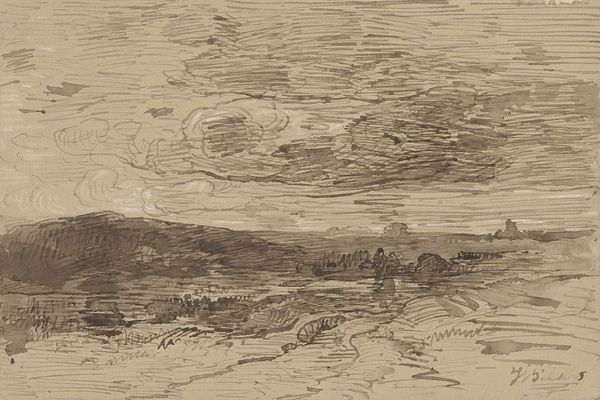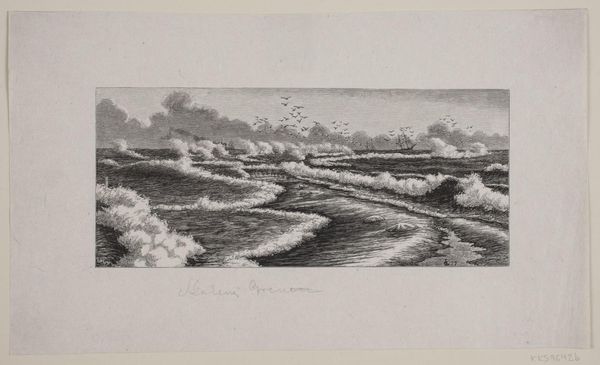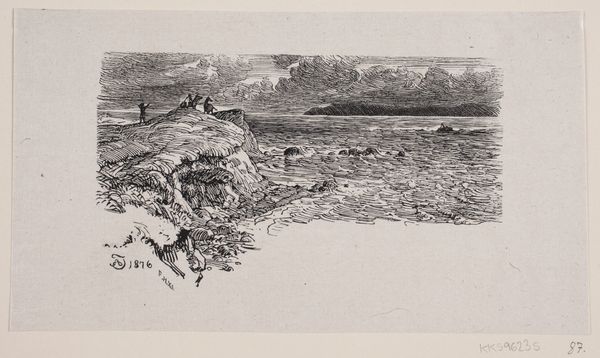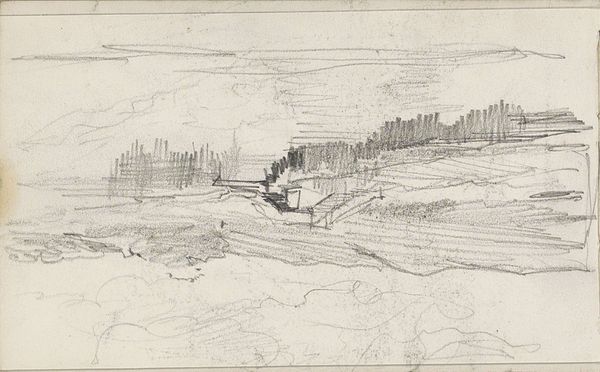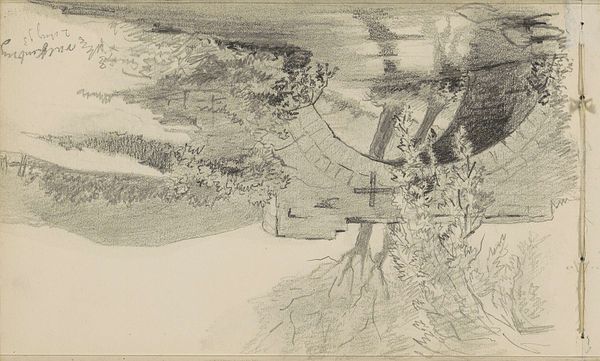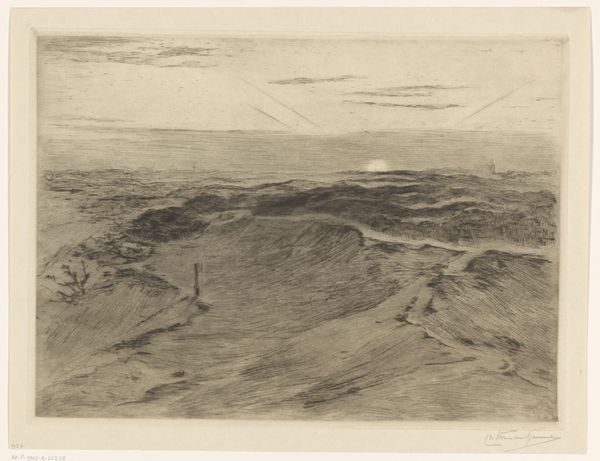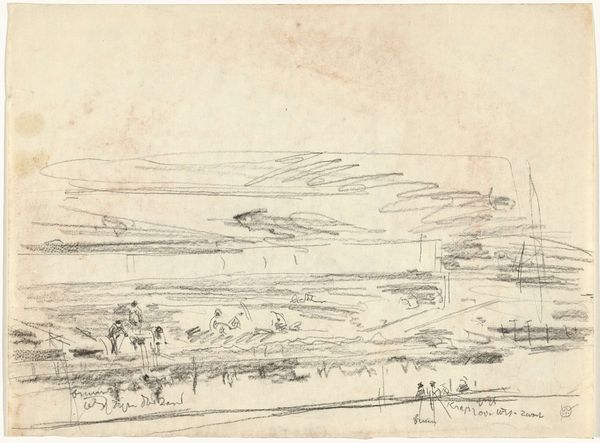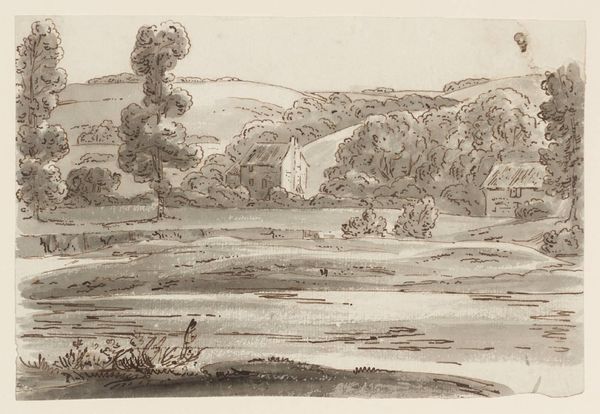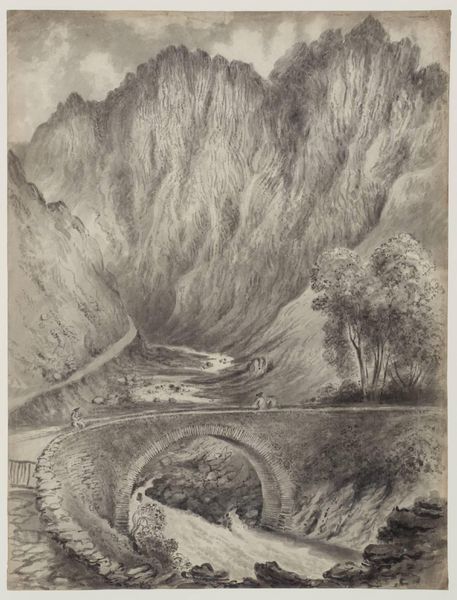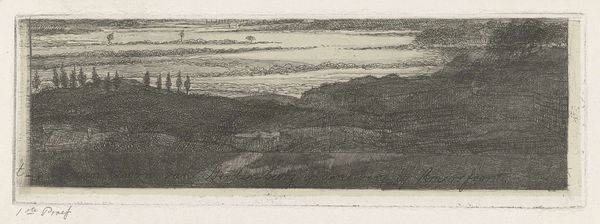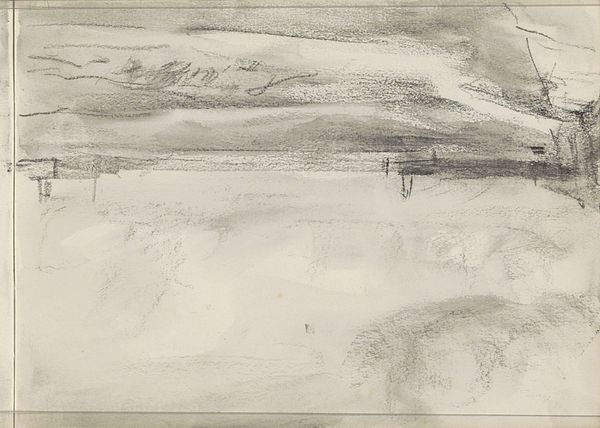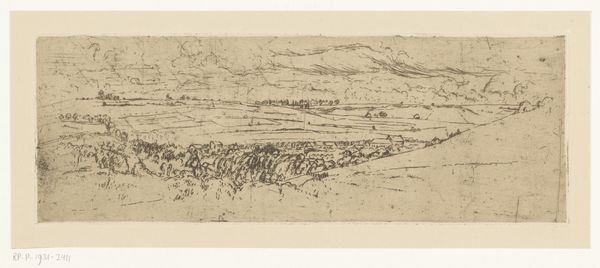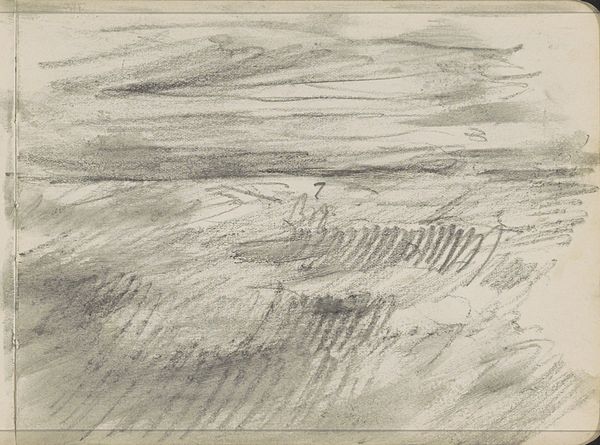
print, etching
#
ink drawing
# print
#
etching
#
landscape
#
abstraction
#
line
#
modernism
Dimensions: Image:375 x 445mm Sheet:508 x 520mm (irregular)
Copyright: National Gallery of Art: CC0 1.0
Curator: Ah, the scent of rain somehow reaches me from this print! Before us, we have Karl Schrag's "Rain Clouds and Sea" from 1948, executed with an etching technique. What is your immediate impression? Editor: A nervous energy! Look at those lines—they're almost frantic, suggesting a brewing storm, maybe internal, maybe external. It makes me wonder about the materials Schrag chose; why etching? What kind of press was used? Curator: Well, etching allowed Schrag to create incredibly fine, detailed lines, achieving this dynamic texture. The pressure applied, the biting of the acid – these controlled processes mirrored, perhaps, the attempt to contain the volatile energy of the scene. Schrag often explored themes of nature's power and humanity's place within it. Do you feel that tension? Editor: Definitely. I'm particularly drawn to the lower section – it looks almost like a vortex, pulling the viewer into the stormy scene. What kind of paper did Schrag prefer for his prints? The choice of paper influences the final visual expression just as much as any mark from the tool. Curator: His choice of paper would contribute to the overall tone and texture. I believe he generally preferred a smooth, absorbent paper that would readily accept the ink, allowing for clear, crisp lines and subtle tonal variations. The social conditions might have influence the avaialbility of papers as well as Schrag's artistic decision. It certainly accentuates the dramatic contrasts here! But the etching process – the physical labor of it—wasn’t he connecting to something deeper? The rhythm, almost meditative? Editor: Perhaps! Although, there’s a violence to the process as well, that acid eating away at the plate – it's not always serene. I keep coming back to this: etching allowed the wider distribution of this art. It isn't exclusive like a singular drawing. In 1948, such broader availability of art meant what, in the reconstruction effort, for the general populace? Curator: It speaks to a cultural shift, perhaps? The democratization of art… bringing these emotionally stirring vistas to a larger public after a period of such collective trauma. The idea of recreating an experience, a feeling, across multiple prints… it is interesting to consider its function for that period. Editor: Precisely! It's less about the singularity of genius and more about collective experience made reproducible through technological means, I find the mood of this etching haunting and evocative. It really brings that feeling of solitude while observing a massive seascape, as I let those clouds and rain carry me far away. Curator: Yes, and with each viewing, fresh lines of inquiry, right?
Comments
No comments
Be the first to comment and join the conversation on the ultimate creative platform.
